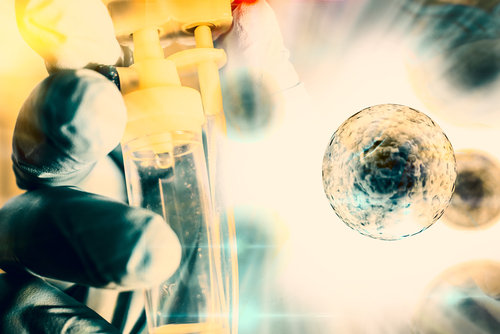Stem Cell Therapy Can Improve Survival, Motor Function of Mice with SOD1 Mutation, Study Shows

Stem cell therapy using a certain type of stem cell called human mesenchymal stromal cells (hMSCs) may have the potential to improve outcomes and prevent progression of familial amyotrophic lateral sclerosis (ALS), a mouse study suggests.
Repeated administrations of these stem cells in the spinal cord prolonged the lifespan and improved the motor function of mice carrying a mutation in the SOD1 gene.
This finding was reported by German researchers in the study, “Analysis of the therapeutic potential of different administration routes and frequencies of human mesenchymal stromal cells in the SOD1G93A mouse model of amyotrophic lateral sclerosis,” published in the journal Tissue Engineering and Regenerative Remodeling.
Stem cells have the ability to replace the damaged and degenerating nerve cells that cause ALS. Due to this, stem cell transplants have been increasingly explored as a therapeutic option to relieve patients’ symptoms and stop ALS progression.
In particular, transplantation with hMSCs may lead to a variety of benefits for ALS patients, including the release of neurotrophic factors and anti-inflammatory molecules that can support and protect nerve cells.
Previous clinical studies have provided promising evidence that a treatment approach with these stem cells could be safe and effective for ALS patients, potentially resulting in improved survival and better motor function.
Several trials are currently exploring the therapeutic activity of common stem cells, as well as of genetically enhanced stem cells, to treat ALS patients. More information about these studies is available here.
Researchers from the Hannover Medical School in Germany explored the potential of hMSC transplants in mice carrying an ALS-associated SOD1 gene mutation.
They transplanted hMSCs that had been isolated from the bone marrow of healthy donors and afterwards expanded in the lab. The team evaluated the efficacy of two administration routes — injected into the brain (intraventricular) or the spinal cord (intraspinal), as well as the impact of single or multiple dosing in this ALS mouse model.
“While intraventricular injection allows for the use of much higher cell numbers than intraspinal injection, the number of cells and the injection site need to be considered regarding efficacy and potential side effects,” the researchers wrote.
Mice that received an intraspinal hMSC injection survived 7.5 days longer than those that received the treatment through intraventricular injection.
However, those that received repeated intraspinal hMSC injections had a slightly but not significantly longer lifespan than animals treated with placebo or treated with a single hMSC administration.
In general, intraventricular hMSC transplantation resulted in poor health of the mice, with reduced weight and worse motor function compared with placebo-treated mice. In contrast, mice treated with two administrations of intraspinal hMSCs showed significantly improved body weight and motor function over animals treated with a placebo or single hMSC dose.
Despite these positive results, the treatment did not seem to induce significant changes in the number of motor nerve cells, which control muscle contraction and are most affected in ALS.
The team also did not find any changes in the levels of neurotrophic factors and anti-inflammatory molecules in the spinal cord and brain after the treatment, nor on the activation of important immune cell populations.
“Based on our results, intraspinal injection of hMSCs might be a more promising option for the treatment of ALS than injection into the right ventricle as the latter resulted in enhanced disease progression and deterioration of motor performance,” the researchers wrote.
“After intraspinal injection cells can directly act upon dying motor neurons. In addition, repeated injections appear more efficacious than a single injection at the presymptomatic disease stage,” they added.
Additional studies are still needed to identify the optimal cell number and administration route for hMSCs in ALS to achieve the maximum therapeutic benefit.






